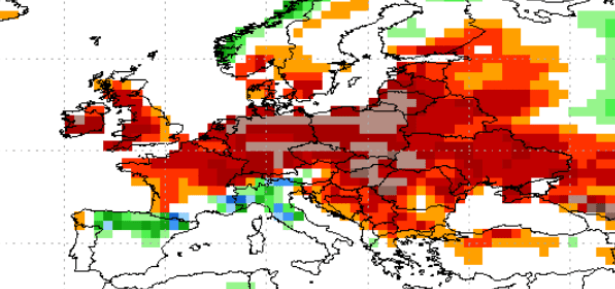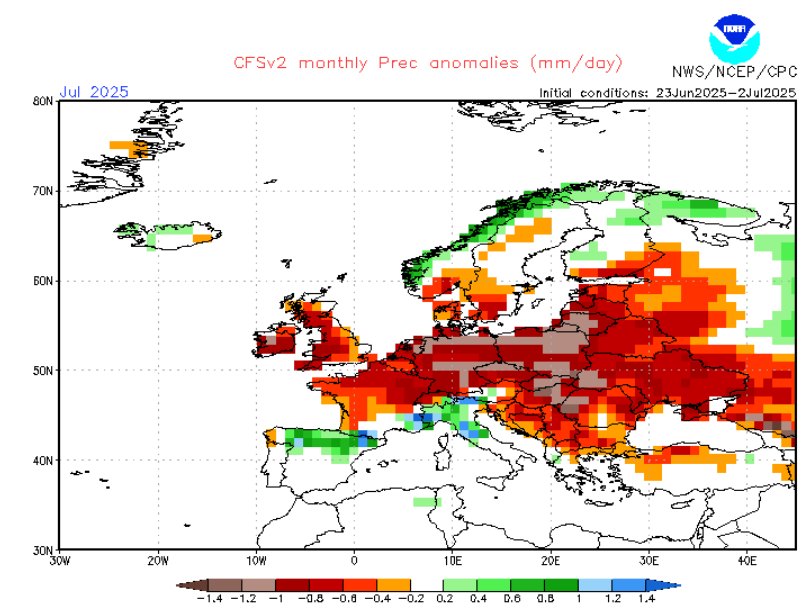
(Based on the latest NCEP CFSv2 monthly‑precipitation forecast issued 23 June – 2 July 2025)
A significant warning is emerging from the latest climate forecasts: Europe is likely heading into a brutal drought in July 2025, with widespread and potentially severe consequences. According to the CFSv2 individual-member precipitation anomaly map provided by NOAA’s Climate Prediction Center (valid for July 2025), most of continental Europe is predicted to experience below-average rainfall—in some regions dramatically so.
Meteorological experts attribute the forecasted drought to a combination of persistent high-pressure systems, a strengthening subtropical ridge, and soil moisture feedback that will accelerate drying across already vulnerable landscapes. With Mediterranean sea surface temperatures running around +1 °C above average, convection is likely to be suppressed, meaning fewer summer thunderstorms that might otherwise break the dryness.
The implications are wide-ranging. Agricultural losses could be significant—especially in France, Germany, and Poland, where July is crucial for final grain development. Many wheat and barley crops will reach their critical filling phase with insufficient rainfall and high evapotranspiration. Yield reductions of 10–25% are a real possibility.
Hydrological stress is another growing concern. River levels on the Rhine, Danube, and Po are already below normal for this time of year, and further lack of rain may bring parts of the shipping network near impassable thresholds. This would impact everything from industrial supply chains to fuel transport at a time when energy demand is peaking due to expected heatwaves. Hydropower output could also decline sharply in Alpine regions.
Moreover, wildfire risk will escalate sharply, with forecasts showing fire weather indices (FWI) reaching “Very High” to “Extreme” levels across France, and parts of Croatia and Greece. Urban centers, already vulnerable to heat island effects, will face mounting public health risks as heat-related hospitalizations and mortality are expected to rise, particularly among elderly and vulnerable populations.
According to the FAO and EU Copernicus Climate Service, confidence in the dry forecast is moderate to high, with strong ensemble agreement across multiple weather models. The consistency of this signal across different members of the CFSv2 system suggests a high probability of a hot and dry July, especially in western and central Europe.
Local and national authorities are urged to act preemptively. That means conserving water, preparing irrigation systems, planning electricity grid loads, and warning the public about heat dangers. Firefighters and civil protection forces may need to be reinforced in southern Europe before the end of June to avoid being overwhelmed later in the month.
In summary, the forecast does not yet declare disaster—but it clearly raises a red flag. If current trends continue, July 2025 may bring one of the most widespread and intense midsummer droughts Europe has faced in recent years, rivaling or surpassing those of 2003, 2015, or 2022. Early preparation and fast adaptation may spell the difference between a challenging season and a damaging crisis.

Source: https://www.cpc.ncep.noaa.gov/products/CFSv2/imagesInd3/euPrecMonInd1.gif

Detail.


























